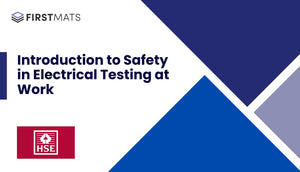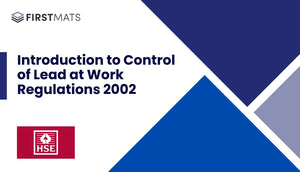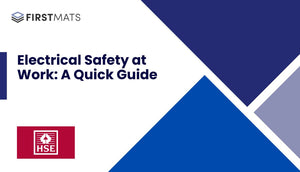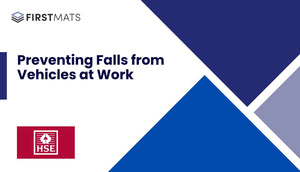Article Index:
Executive Summary: HSE Report on Work-Related Ill Health and Workplace Injury Trends in Great Britain
The following is an executive summary of the annual statistics report on work-related ill health and workplace injury trends in Great Britain, published by the Health and Safety Executive (HSE) on 22 November 2023. The report presents a comprehensive assessment of longer-term trends, using a range of data sources. This summary aims to highlight key findings and statistics from the report, providing an easy-to-understand overview of the current situation.
1. 1.8 million workers suffered from work-related illnesses in 2022/23
According to the report, an estimated 1.8 million workers in Great Britain were suffering from an illness which they believed was caused or made worse by work in 2022/23. This is equivalent to a rate of 5,250 per 100,000 workers (5.2%). The rate of self-reported work-related ill health had been falling in earlier years but had been broadly flat in the years prior to the coronavirus pandemic. The current rate is higher than the 2018/19 pre-coronavirus level (Source: Labour Force Survey, page 5).
2. 25% of all cases of self-reported work-related ill health were Musculoskeletal disorders
Musculoskeletal disorders accounted for around a quarter of all cases of self-reported work-related ill health in Great Britain in 2022/23. The rate of self-reported work-related musculoskeletal disorders showed a generally downward trend prior to the coronavirus pandemic. The current rate, at 1,400 cases per 100,000 workers (1.4%), is similar to the 2018/19 pre-coronavirus level (Source: Labour Force Survey, page 6).
3. 50% of all cases of self-reported work-related ill health were due to Stress, depression or anxiety
Stress, depression or anxiety accounted for around half of all cases of self-reported work-related ill health in Great Britain in 2022/23. In the recent years prior to the coronavirus pandemic, the rate of self-reported work-related stress, depression or anxiety had shown signs of increasing, having been broadly flat since 1998/99. The current rate, at 2,590 cases per 100,000 workers (2.6%), is higher than the 2018/19 pre-coronavirus level (Source: Labour Force Survey, page 7).
4. 2-4% of cases of self-reported work-related illness are reported as “breathing or lung problems”
Typically, 2-4% of cases of self-reported work-related illness are reported as “breathing or lung problems”. In 2022/23, an estimated 38,000 workers in Great Britain were suffering from a work-related breathing or lung problem (either new or long-standing). The rate of self-reported breathing or lung problems had been broadly flat since the mid-2000s, having been higher previously. The current rate is similar to the 2018/19 pre-coronavirus level (Source: Labour Force Survey, page 8).
5. Annual mesothelioma deaths have remained broadly level over the last 10 years
Annual mesothelioma deaths have remained broadly level over the last 10 years following a sustained increase over earlier decades since 1970, largely due to past exposures. Numbers are expected to decline during the 2020s (Source: HSE Mesothelioma register, Death Certificates; Industrial Injuries and Disablement Benefit scheme, page 9).
6. 135 workers were killed in work-related accidents in 2022/23
In 2022/23, 135 workers were killed in work-related accidents in Great Britain including 91 employees and 44 self-employed workers. Fatal injury numbers to employees have fallen by around 85% over the period from the early 1970s to the current-day, although more recently numbers have been broadly level (Source: RIDDOR and earlier reporting legislation, page 11).
7. 561,000 workers sustained a non-fatal injury at work in 2022/23
In 2022/23, an estimated 561,000 workers sustained a non-fatal injury at work in Great Britain according to self-reports from the Labour Force Survey, equivalent to a rate of 1,750 injuries per 100,000 workers (1.8%). Around a quarter of these injuries resulted in over-7-days absence from work. The current rate is similar to the 2018/19 pre-coronavirus level (Source: Labour Force Survey, page 13).
8. Rate of employer reported non-fatal injury is below the 2018/19 pre-coronavirus level
Prior to the coronavirus pandemic, the rate of non-fatal injury to employees reported by employers showed a downward trend. The current rate is below the 2018/19 pre-coronavirus level. However, reporting by employers is known to be incomplete and may be distorting the trend. The current level of reporting of work-related non-fatal injuries to employees is estimated at around a half (Source: RIDDOR, page 13).
9. 35.2 million working days were lost due to work-related illness and non-fatal workplace injuries in 2022/23
In 2022/23, an estimated 35.2 million working days were lost due to work-related illness and non-fatal workplace injuries in Great Britain; 31.5 million days due to work-related illness and 3.7 million days due to workplace injury. This is equivalent to 1.31 working days lost per worker over the year. The current rate is higher than the 2018/19 pre-coronavirus level (Source: Labour Force Survey, page 15).
Conclusion
The HSE report provides a comprehensive overview of the current trends in work-related ill health and workplace injury in Great Britain. While there have been significant reductions in fatal and non-fatal workplace injuries over the years, the picture for ill health is mixed with rates of self-reported work-related stress, depression, or anxiety showing signs of increasing. The report highlights the importance of ongoing efforts in health and safety management to further reduce workplace injuries and illnesses.







